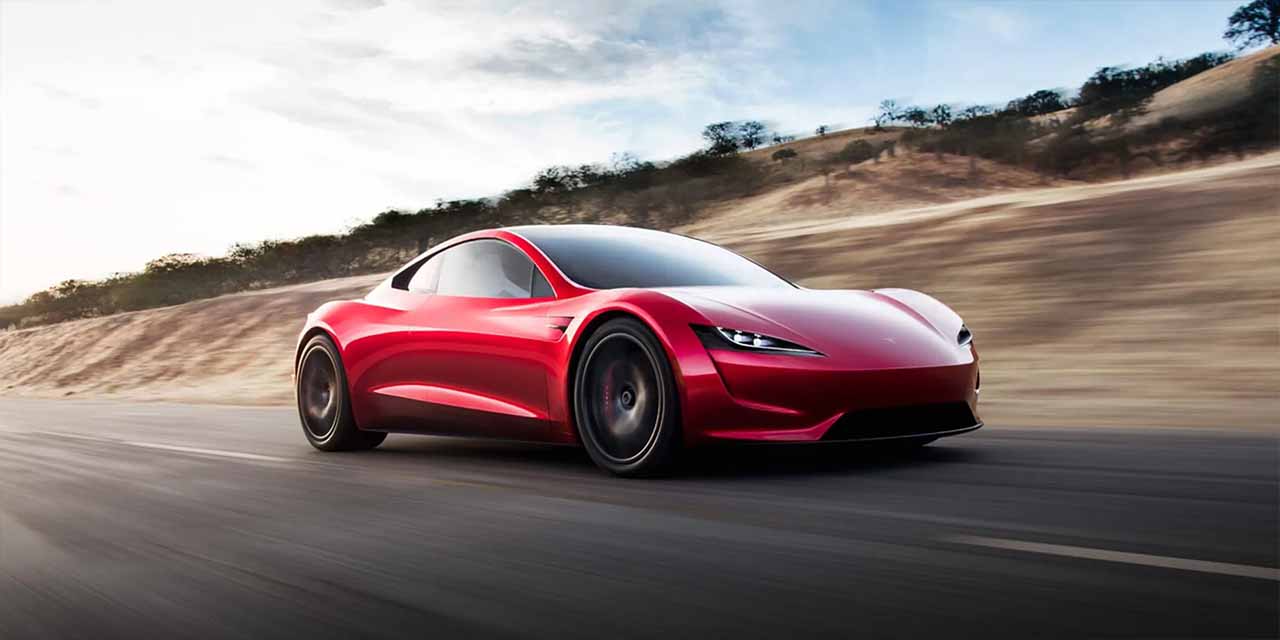
Mate Rimac, CEO of supercar makers Rimac and Bugatti, has commented on Elon Musk’s claim that the new Tesla Roadster is going to accelerate from 0 to 60 mph in less than 1 second with thrusters.
He sees some problems with it.
Tesla’s next-generation Roadster was first unveiled back in 2017. It was first supposed to come in 2020, but it has been delayed every year since.
Last year, Elon Musk said that it would come in 2024.
Last month, the CEO said that he had a design meeting about the new Roadster, and they decided to “radically increase the design goals for the new Tesla Roadster.” Musk said that the vehicle is delayed again until next year, but he said that Tesla plans to unveil an updated version later this year.
Musk again claimed that the vehicle would achieve sub-1-second 0 to 60 mph acceleration with cold air thrusters built by his rocket company, SpaceX.
Rimac has been keeping close track of the Roadster program as its Neverra electric hypercar is achieving similar performance that Tesla has been originally claiming for the Roadster.
After Tesla unveiled the prototype of the new Roadster, Rimac unveiled a new version of its supercar with similar specs.
The Croatian electric supercar manufacturer is also now in a better than position than ever to compete with Tesla after Porsche invested in the company and had its founder and CEO, Mate Rimac, takeover legendary supercar maker Bugatti.
Recently, Rimac was asked on Facebook about Tesla’s claim of sub-1-second 0 to 60 mph acceleration in the new Roadster.
He said that Rimac did the simulation. He thinks it’s possible, but it creates some weight issues:
It is possible with thrusters. We did the simulation. The problem is that you release the air in 2-3 seconds, and then you have a lot of dead weight that you are carrying around (tanks, compressors, valves, nozzles, etc.). Same with fans – they just give you more grip, but you need something like 30.000 Nm on the wheels to accelerate below 1 sec 0-100 km/h, which means you need massive motors, inverters, gearboxes, driveshafts, etc. Plus, the car has to be super light as otherwise you can’t create a lot of excess downforce with the fans as the tires would be overloaded very fast with any kind of car with “normal supercar” weight, especially electric. And then again you are carrying the weight with you when you are not doing 0-100 km/h. So thrusters are really the only way to go. But it brings a lot of downsides as well.
It sounds like Rimac is not sold on the idea of putting cold air trusters in its supercars.
Can Tesla prove them wrong?
Electrek’s Take
It sounds like a fair assessment. There is a lot of hardware in the car, almost entirely just to accelerate faster, which you will likely not be able to do on public roads with the thrusters.
The rest of the time, it will make your car’s performance worse with the added weight.
Originally, Tesla talked about the new Roadster having over 600 miles (965 km) of range. That was one of the things I was most excited about with the Roadster.
However, since then, Musk has said that Tesla is not interested in making cars with more than 400 miles of range and interestingly, it’s for a similar reason as the problem highlighted by Rimac. People rarely drive more than 400 miles in one go and the rest of the time, you are carrying a super large and heavy battery pack for no reason.
With his recent update on the new Roadster, Musk didn’t mention the range. It will be interesting to see if 600 miles of range is still in the plans for the new Roadster.
FTC: We use income earning auto affiliate links. More.